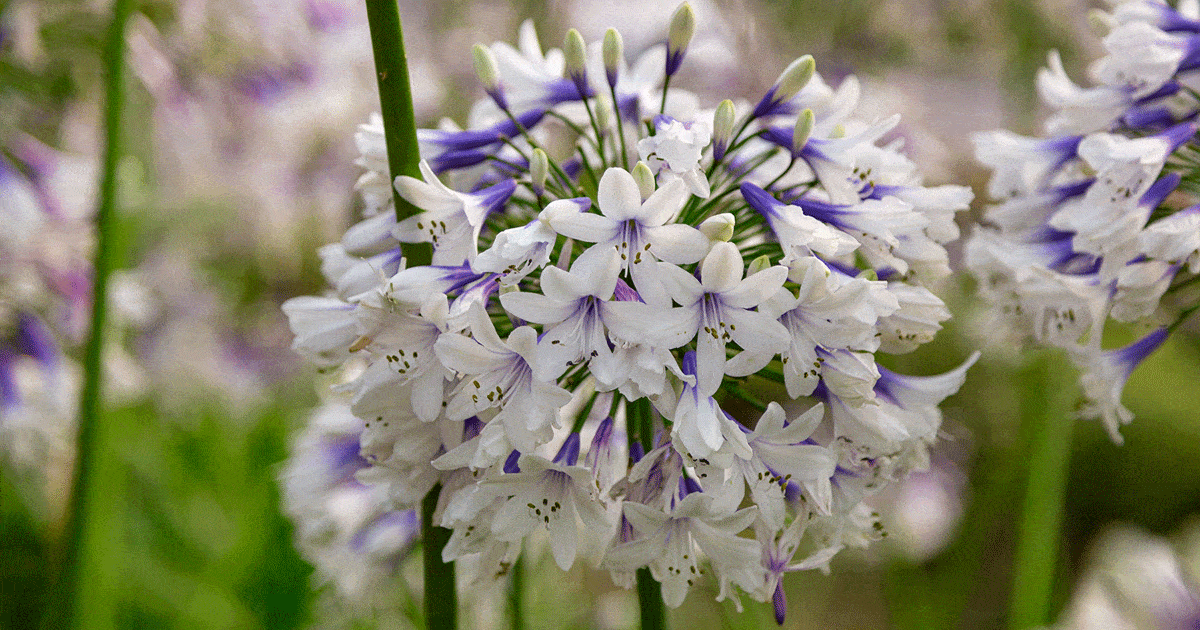Agapanthus Companion Plants: Perfect Pairings for Your Garden
Agapanthus Companion Plants: Perfect Pairings for Your Garden
Blog Article
Mastering the Art of Agapanthus Care: Necessary Actions for Healthy Development and Vibrant Blooms
In the world of cultivation, the farming of agapanthus stands as a fulfilling venture for those who seek to support these stylish blooming plants. From choosing the ideal selection to understanding trimming techniques, the trip in the direction of growing thriving agapanthus plants is diverse and holds the crucial to opening the complete possibility of these agricultural treasures.

Choosing the Right Agapanthus Variety

When choosing the right Agapanthus selection for your yard, consider aspects such as climate viability, bloom shade, and development routine. Agapanthus, frequently called Lily of the Nile or African lily, comes in a selection of shades ranging from tones of blue and purple to white. Select a flower color that matches your existing garden scheme to develop a harmonious landscape. In addition, consider the climate in your region to make certain the Agapanthus range you pick can flourish in your particular conditions. Some ranges are a lot more forgiving of chilly temperatures, while others choose warmer environments. Comprehending the development habit of different Agapanthus varieties is vital for correct positioning within your yard. Some selections have a clumping development behavior, ideal for boundaries or containers, while others have an even more dispersing nature, appropriate for ground cover or mass growings. By very carefully examining these aspects, you can select the best Agapanthus range to enhance the appeal of your yard.
Perfect Planting Conditions
Taking into consideration the ideal ecological demands is important for successful Agapanthus growing. Agapanthus plants are delicate to cold temperature levels and must be protected from frost throughout winter months.
To guarantee healthy and balanced development and vivid flowers, plant Agapanthus light bulbs at a deepness of about 2-4 inches and area them 8-12 inches apart. Mulching around the base of the plants assists preserve moisture and reduces weed development.
Watering and Feeding Tips
Preserving appropriate moisture degrees and providing vital nutrients are crucial elements in the care regimen for Agapanthus plants. It is crucial to strike a balance when it comes to sprinkling Agapanthus. If overwatered, these plants prefer continually moist soil yet are susceptible to root rot. During the expanding period, water deeply when a week, guaranteeing the soil is well-draining to avoid waterlogging. In hotter climates or during periods of dry spell, more regular watering may be necessary to maintain the soil uniformly wet. Nevertheless, reduce watering in the winter season to prevent water logged problems.
Fertilizing Agapanthus is vital for promoting healthy and balanced development and prolific blooms. Use a well balanced plant food, such as a 10-10-10 formula, in the early springtime as brand-new growth arises. Repeat this application every 6-8 weeks throughout the expanding period. Prevent extreme fertilizing, as it can result in lush foliage at the expense of blooms. Always adhere to the producer's instructions for proper dilution and application techniques. By adhering to these watering and feeding ideas, you can ensure your Agapanthus plants thrive and produce lively, lasting blossoms.
Trimming Strategies for Agapanthus
Trimming Agapanthus plants at the proper times and with proper techniques is critical for preserving their wellness and promoting optimum development and flowering. The excellent time to trim Agapanthus is in late wintertime or very early springtime prior to new development arises.
Deadheading spent blossoms can likewise redirect the plant's energy into generating even more blooms instead than setting seeds. If you want to accumulate seeds for proliferation, leave some blossoms to dry and mature on the plant.
Remember to use tidy, sharp tools to make exact cuts and reduce the threat of presenting diseases. Agapanthus. Normal trimming will certainly help keep click for more your Agapanthus looking cool and healthy while making sure an abundant screen of stunning blooms
Managing Usual Pests and Illness
After making sure correct trimming methods for Agapanthus, it is crucial to attend to usual insects and diseases that can impact the health and vigor of these plants. One typical parasite that impacts Agapanthus is the Agapanthus gall midge.
Furthermore, Agapanthus plants can experience from origin rot if they are planted in poorly draining pipes soil. By being watchful and taking timely action versus conditions and parasites, you can help your Agapanthus plants thrive and produce vivid blossoms. Agapanthus.

Verdict
In you could try this out conclusion, grasping the art of agapanthus treatment involves selecting the right variety, offering perfect growing problems, correct watering and fertilizing, ideal trimming strategies, and attending to typical parasites and illness. By following these necessary steps, you can guarantee healthy and balanced growth and vibrant blossoms for your agapanthus plants. Keep in mind to routinely keep an eye on and preserve your plants to advertise their overall well-being and longevity.
To ensure healthy development and dynamic blossoms, plant Agapanthus bulbs at a depth of concerning 2-4 inches and area them 8-12 inches apart. By following these watering and fertilizing tips, you can guarantee your Agapanthus plants thrive and produce vivid, durable blossoms.
One usual pest that affects Agapanthus is the Agapanthus gall midge. Additionally, Agapanthus plants can suffer from origin rot if they are grown in improperly draining pipes soil. look at this website By adhering to these necessary actions, you can make sure healthy and balanced growth and lively blooms for your agapanthus plants.
Report this page